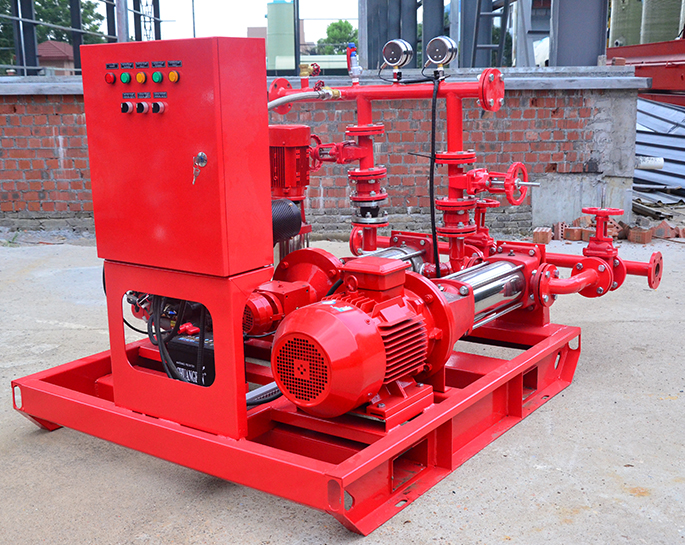How do testing procedures for fire pump systems vary depending on regulatory requirements and industry standards?
Apr 17, 2024
Share:
Testing procedures for fire pump systems can indeed vary depending on regulatory requirements and industry standards, which are typically established to ensure the reliability and effectiveness of these critical life safety systems. Here's a general overview of how testing procedures may vary:
1. **Regulatory Requirements**: Different regions or countries have their own regulations governing fire protection systems. These regulations may specify requirements for testing frequency, procedures, documentation, and performance standards. For example, in the United States, the National Fire Protection Association (NFPA) publishes the NFPA 20 standard, which outlines requirements for the installation and maintenance of fire pumps.
2. **Industry Standards**: In addition to regulatory requirements, various industry standards may also influence testing procedures. Organizations such as NFPA, the International Code Council (ICC), and the American Society of Mechanical Engineers (ASME) publish standards that provide guidelines for the design, installation, and maintenance of fire pump systems. These standards often incorporate best practices based on industry experience and technological advancements.
3. **Testing Frequency**: Regulatory requirements and industry standards typically specify the frequency of testing for fire pump systems. This may include weekly, monthly, quarterly, annual, and five-year tests, each serving a different purpose and level of scrutiny. For example, weekly tests may involve checking pump status indicators and alarms, while annual tests may involve full-load operational tests to ensure the pump can deliver the required flow and pressure.
4. **Performance Testing**: Performance testing is a critical aspect of fire pump testing procedures. This involves verifying that the fire pump can deliver the required flow and pressure under various operating conditions. Performance testing may include flow tests, pressure tests, and power tests to ensure that the pump meets the design specifications and can adequately supply water to the fire protection system.
5. **Documentation and Record Keeping**: Compliance with regulatory requirements often involves thorough documentation and record-keeping of testing procedures and results. This documentation may include test reports, maintenance logs, inspection records, and certification documents. Proper documentation is essential for demonstrating compliance with regulatory requirements and ensuring the reliability of fire pump systems.
Overall, while the specific testing procedures for fire pump systems may vary depending on regulatory requirements and industry standards, the overarching goal is to ensure the reliability, performance, and effectiveness of these critical life safety systems in the event of a fire emergency.

1. **Regulatory Requirements**: Different regions or countries have their own regulations governing fire protection systems. These regulations may specify requirements for testing frequency, procedures, documentation, and performance standards. For example, in the United States, the National Fire Protection Association (NFPA) publishes the NFPA 20 standard, which outlines requirements for the installation and maintenance of fire pumps.
2. **Industry Standards**: In addition to regulatory requirements, various industry standards may also influence testing procedures. Organizations such as NFPA, the International Code Council (ICC), and the American Society of Mechanical Engineers (ASME) publish standards that provide guidelines for the design, installation, and maintenance of fire pump systems. These standards often incorporate best practices based on industry experience and technological advancements.
3. **Testing Frequency**: Regulatory requirements and industry standards typically specify the frequency of testing for fire pump systems. This may include weekly, monthly, quarterly, annual, and five-year tests, each serving a different purpose and level of scrutiny. For example, weekly tests may involve checking pump status indicators and alarms, while annual tests may involve full-load operational tests to ensure the pump can deliver the required flow and pressure.
4. **Performance Testing**: Performance testing is a critical aspect of fire pump testing procedures. This involves verifying that the fire pump can deliver the required flow and pressure under various operating conditions. Performance testing may include flow tests, pressure tests, and power tests to ensure that the pump meets the design specifications and can adequately supply water to the fire protection system.
5. **Documentation and Record Keeping**: Compliance with regulatory requirements often involves thorough documentation and record-keeping of testing procedures and results. This documentation may include test reports, maintenance logs, inspection records, and certification documents. Proper documentation is essential for demonstrating compliance with regulatory requirements and ensuring the reliability of fire pump systems.
Overall, while the specific testing procedures for fire pump systems may vary depending on regulatory requirements and industry standards, the overarching goal is to ensure the reliability, performance, and effectiveness of these critical life safety systems in the event of a fire emergency.


.png)
.png)

.png)


